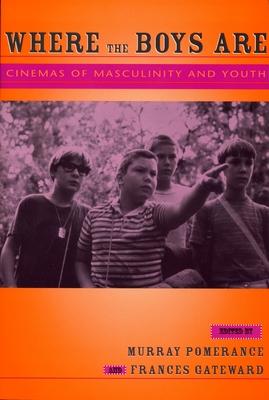A provocative, contemporary anthology examining the construction of boys' identity in modern cinema.
The development of young masculine sexuality is still a cultural taboo of sorts, and until now there has been little scholarship available that discusses aspects of boyhood and its relation to cinema--in particular, the process whereby masculinities are socially, historically, economically, aesthetically, and psychologically created in male coming-of-age as depicted onscreen. Where the Boys Are: Cinemas of Masculinity and Youth scrutinizes a broad corpus of films about boyhood within a cross-genre, trans-historical, cross-authorial, and cross-cultural framework. Unlike the filmic investigations before it, this book is not restricted to examining boys as agents of violence, aggression, and withdrawal; or as routinely glossed agents of romance or victims of comedic ridicule.
Where the Boys Are is divided into three sections: Archetypes and Facades includes essays that examine historically central typifications of boyhood, the most accessible categories for seeing and understanding boy characters; essays in Bonds and Beautifications analyze the ways boys establish images of themselves and identify with one another in affiliation or love; and essays in Struggles and Redefinitions explore the way boys are depicted in film as aligning themselves in relation to people, forces, ideas, and situations. Using the most current and diverse critical methods, Where the Boys Are is a crucial resource for film scholars and students at any level, and is also the perfect companion to Gateward and Pomerance's Sugar, Spice, and Everything Nice: Cinemas of Girlhood (Wayne State University Press, 2002).
